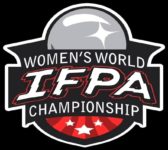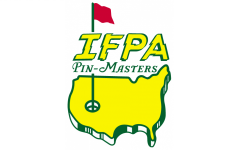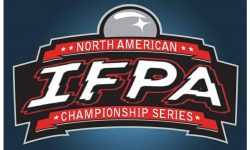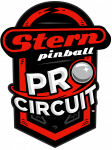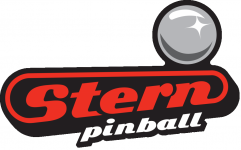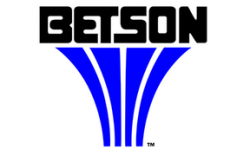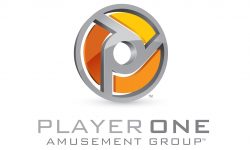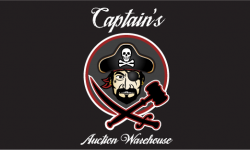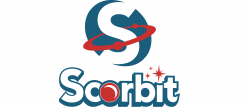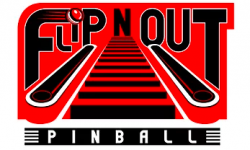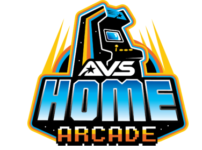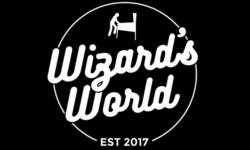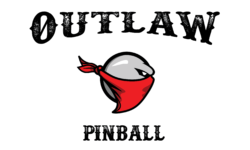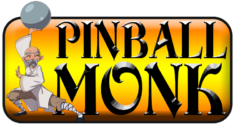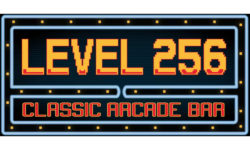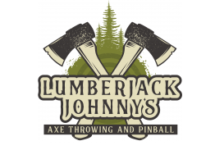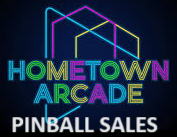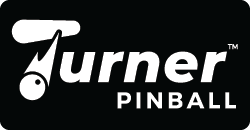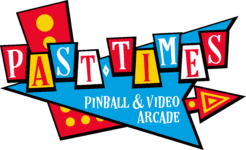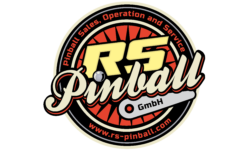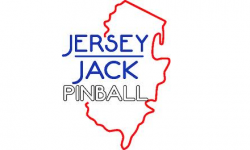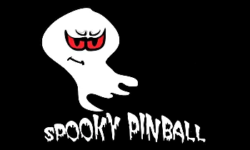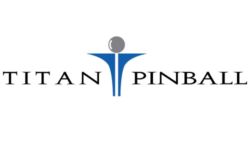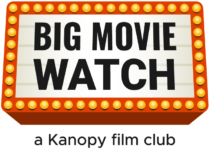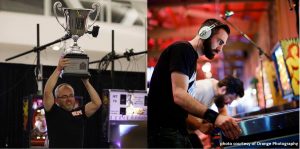 Interview conducted and written by Louis Marx of BOS Pinball and the DFW Pinball League
Interview conducted and written by Louis Marx of BOS Pinball and the DFW Pinball League
Interview with:
COLIN MACALPINE
Austin, TX Tournament Director and Texas Pinball Festival Tournament Co-Director
and
PHIL GRIMALDI
Houston, TX Tournament Director and Texas Pinball Festival Tournament Co-Director
Foreword:
I know we were in Texas for last quarter’s interview. It’s also true that I intend to do these all over the country (or world). That said, I was granted a unique opportunity this time and I wasn’t going to miss it. So, we are staying in Texas again this quarter with the Tournament Directors for the MASSIVE Texas Pinball Festival IFPA Tournament. In summer, I will be talking to a Tournament Director from the northeastern United States so stay tuned.
1. Let’s start with biographical info:
a. Where are you from originally?
COLIN: Rosemount, MN
PHIL: Cleveland, OH
b. How did you end up in Houston (Phil) and Austin (Colin) respectively?
COLIN: My wife and I followed jobs that ultimately brought us to Austin. We’ve been in Austin about 15 years.
PHIL: Went Kent State and then moved to Indiana for grad school at Purdue University. So I took a post-doctoral position at Rice in Houston. I was supposed to be there for 2 years but OpenStax offered me a job while I was in post-doc and I’ve been here since. That was 2014.
2. Before we get into the history and background stuff, let’s talk about the Texas Pinball Festival tournament, one largest WPPR value tournaments out there, and a part of the Stern Pro-Circuit. What’s the largest single challenge for each of you in running this tournament?
COLIN: Managing the wait list and tournament slots aren’t fun, but the biggest challenge is filling volunteer slots. There’s already a great volunteer structure under the TPF umbrella. To be clear, the VanderVeens and Jaelanne (Gilliam) have a great volunteer system and also manage the signup process as well. This event doesn’t run without its great volunteers. Scorekeeping can be a thankless job. Be nice to your scorekeeper and please don’t yell at them.
PHIL: Running an event of that size, it’s not that there’s one big thing, but it’s a lot of little things. There’s just 1000 moving parts so staying organized and planning out is the key to success. We also do the twitch.tv stream for the tournament as well. There are 18 hour days just running the tournament. At the end you are sore, tried, exhausted and put a lot of time and effort. Then the first thing you get is accusatory or negative feedback. Feedback is good, not matter what. You need it to get better. Just at some point its tough to hear feedback if it comes from a place of ignorance or it isn’t fair.
3. It must be a challenge getting all of the machines for the tournament. How do you keep them different and fresh every year?
COLIN: Look at how many pins are at the Texas Pinball Festival. The quality is exceptional. The number of pins from private collectors so I’m never at a loss. We try to rotate machines out every year and use a lot more machines now that we have a classics tournament.
PHIL: The organization effort is a community driven process. It’s a matter of reaching out to collectors that we know and asking them. It’s a huge ask and we recognize it. There’s a lot of networking that goes into it. Moving pinball machines is a challenge. It also pains me when I hear players badmouthing a game.
4. What unique challenges does such a massive tournament have when compared to one of your normal, local events (or leagues)?
COLIN: Difficulty is in handling all of the data and scores; but years ago that became much easier thanks to Karl DeAngelo’s Neverdrains software.
PHIL: Nothing really changes all that much when you scale up a tournament. Calculate your throughput for all of your games. Making people comfortable when/if they wait. TPF has a game limit – number of games a player can play – that number isn’t arbitrary. A lot of calculation goes into that and into the number of players that are allowed to play in the tournament. So we make the decision to cap the number of players so that we don’t compromise the integrity of the tournament.
5. All-in, including getting machines, setting things up, and running the event, how many hours, days, weeks, or months do you think that you end up putting into the Texas Pinball Festival on average?
COLIN: I don’t keep track and don’t want to estimate. It’s a lot of time. I don’t want to keep track.
PHIL: It would be hard to quantify. The most work goes into it during the weekend. Probably 60-80 hours just during the weekend. The planning for it starts as far back as November. Thank goodness for Kim VanderVeen . Managing the wait list is huge thing that she does. It’s a team effort and a lot of thought and work go into it.
6. Moving to some more biographical info, what’s your oldest pinball memory?
COLIN: I first started to play at Carbone’s Pizza in Apple Valley, Minnesota on Cyclone and Banzai Run. It was the first time I earned my own replay.
PHIL: My oldest memory was with my Dad taking us to a driving range. There was an ice cream shop next door which had an Adams Family and I used to love watching thing grab the ball. That would have been in the early 1990s.
7. What brought you back to pinball as an adult?
COLIN: I never went away from pinball. I never owned machines until 2011 or 2012. After college I didn’t get to play much. There weren’t many machines on route. I still tried to find machines where I could, so I never really stopped.
PHIL: Around 2012 at grad school at Purdue when Main Street amusements opened up. It was literally across the street from my apartment. I loved the sounds and feel of the arcade itself. I really liked Creature from the Black Lagoon. I stated realizing there were rules and things started clicking into place. I fell in love with just learning the rules of different games and it turned out being a great stress reliever for me.
8. When did you get into competitive pinball?
COLIN: At the 2011 Tron launch party. I didn’t know competitive pinball existed. I wish I knew much earlier.
PHIL: About a half year after starting to play at the arcade, I noticed that there was a league playing there. I missed the signup for the first season. I’d go in and see what scores people were putting up to see if I could beat them later. I signed up for the next league and placed third. That was a big boost of confidence for me. Then the 1st tournament that I played in, I made the finals, including beating Joshua Henderson and took 2nd place. It was an amazing high. I was so jazzed up. Ever since then, I still get amped up to chase that competitive high.
9. When you started running your own events and/or leagues, were there already other events and/or leagues running in your cities?
COLIN: Yes, (in Austin) Pinballz was running their own leagues and events but they didn’t have the level of knowledge/passion to do it efficiently.
PHIL: Yes, a couple of others in Indiana were putting on tournaments. I enjoyed almost all of the tournaments that I went to. They did a lot of HERB style pump and dump tournaments and then local league was more of a match play format. Brackelope was also newer at the time and that led to some strikes tournaments.
In Houston there were no leagues running. There would be tournaments few and far between. I usually had to drive to Austin to play.
10. What prompted you to start your events and/or leagues Houston and Austin?
COLIN: (Austin) The community quickly realized that we needed to start running our own events.
PHIL: (Houston) The motivation was simple. There wasn’t enough to satisfy my competitive craving. I started running the monthly events at the game preserve. Later we started a weekly league with Charlie Kalas at Joystix. From there it snowballed. Now Houston is one of the top competitive pinball scenes in the country.
11. What was the first year for your events and/or leagues? How did it go?
COLIN: (Austin) I don’t recall, probably 2012 or 2013. It went well. The first events were head to head, Swiss style. It worked well and was a lot of fun. I gravitated early on to matchplay. It requires a lot of pins, but we had that luxury at the time.
PHIL: The first tournament I ever ran was a pump and dump tournament that I ran in Indiana. I think it was in 2013. It was Flip Off Hunger event and did pretty well. I think it made about $600 for the local food bank. There was not a lot of software, so for these tournaments, people were using excel. So I wrote a bunch of scripts for the excel files and uploaded the data to a website so people could see the standings. I really liked that aspects of running a tournament because I used my skills from Grad school to improve the events for everyone. My first tournament in Houston was 2015 at the Game Preserve in Spring, Texas.
12. Directing Pinball Tournaments can be a thankless job. Any regrets or second thoughts?
COLIN: No … I grew up as a kid referring soccer. That helped me develop a thick skin at a young age. If I had to think of one, I’d say that I regret not being able to spend more time with family at the Texas Pinball Festival. Moving the finals to Saturday evening, at least, has opened up Sunday for family. I also like a balance between running and playing in others’ tournaments. It’s healthy to play in others’ events and also helps to see what others are doing.
PHIL: Not really. Yeah it can be stressful and take a lot of time but for every negative thing that you hear, you also have a lot of positives.
13. What’s the craziest ruling you’ve had to make as a director?
COLIN: I don’t know. . . I don’t have instant recall of all the rulings I’ve had to make. There was one year at the Texas Pinball Festival in which a player managed to get on a game even though that player had run out of entries. The player had a great game, but it didn’t count since they had no more entries.
PHIL: Maybe not the craziest one but the craziest reaction I had: I had a player who playing in a local league. On some of the games auto-plunge is turned on. They player was at the bar. So he lost his ball without being given then required amount of time. The ruling was that the player would be given a compensation ball. The player was upset and was yelling at me about the ruling. He got belligerent even though it was the correct ruling. It showed me how a ruling can still affect people.
14. How often do you deal with participants get belligerent and have to be removed/disqualified from a tournament? I can relate to this one because I got pretty upset and had to be warned by you, Phil, at the Space City Open a couple of years ago … granted I didn’t have to be removed … Remember that one?
COLIN: I’ve warned multiple people at various events. Before we had a yellow/red card system, I was already basically doing it in the way I gave people warnings. That said, I’ve never had to eject anyone.
PHIL: Thankfully not often. I’ve only had to remove a player from competition one time. Over the last year we’ve put together a league board of directors so I am not the only one calling the shots anymore. It helps the league make better decisions and I feel better making that decision when I have multiple people agreeing on that decision.
15. How do you market your tournaments to bring in more participants? Do you have any secrets to share?
COLIN: No secrets. I’m fortunate with the TPF tournament being attached to the best pinball show in the country. Austin can be a little more of a struggle at times. I’m not the person to really talk to about marketing. I just try to put on the best event possible and let things spread via word of mouth. I’m a big proponent of making the experience enjoyable and competitively meaningful for novice and newer players so they can enjoy it just as much as the pros.
PHIL: We do a variety of things. I originally made custom posters for every single event. I’d find some classic Sci-Fi poster and Photoshop it. I ended up getting a lot of people wanting to use my templates. It made sense for us with it being the Space City pinball league. It gives more authenticity to the event when an event has art. We have a website that we put all the stuff on too. One of the best places to put a flyer is above the urinal in a men’s bathroom or on the stall door in a women’s bathroom. Also when new people show up engage them and find out how they heard about them and genuinely learn about them. Word of mouth is a huge driver. We have a lot of members in our league who go out and talk about the league.
16. How many participants did you have at your first event?
COLIN: I don’t remember.
PHIL: Probably about 30.
17. How many participants do you have at normal events now?
COLIN: Depends on the type of event/ TPF has 160, the Bat City open has 60-70 every year, and the last TPL had around 80, and local Austin events are about 16-20.
PHIL: Our weekly league is pulling in 48 players a week. A regular event now has over 40 players in it.
18. What about growth? I know Houston has grown dramatically… What’s going on in Austin? What is your vision for you events and/or leagues AND your local scene as a whole in the next 12 months? How about 5 years?
COLIN: I’d like to see more people that live downtown get into the pinball scene. I believe that’s an untapped market.
PHIL: New people keep showing up and they keep bringing in more new people. I don’t know. I just hope we can continue to maintain the level of quality and fun. In 5 years I hope we have more locations to play and more tournaments.
19. How different is it to run larger versus smaller tournaments for you? What stands out?
COLIN: People have a tendency to be more intense at a larger tournament which leads to greater scrutiny and constructive criticism or complaints. Its par for the course. That said, I appreciate the feedback. In 2018, we changed the Bat City Open to a matchplay format based on feedback and a majority of the feedback we received after the event was positive. I also work hard to make my actual rulings consistent between large and small tournaments.
PHIL: A smaller tournament you’re going to have more players that understand everything so you don’t have to explain the rules and such. A larger tournament there’s less of the comradery so it’s a different vibe.
20. What is your preferred or favorite tournament format? Why?
COLIN: Matchplay . . . I think it’s the most indicative of how you’ll perform in a finals. It’s also forced social interaction providing opportunities new people who also love pinball. It’s been great getting to know other people who also love pinball.
PHIL: I’m a huge fan of Matchplay Tournaments. Pinburgh is probably the best tournament in my mind. The first year I went, it was eye opening to me. I like playing directly against people and it’s more social.
21. What haven’t I asked that you feel the pinball community might want to know?
COLIN: Get More Kids Involved!!! My kids play too. I don’t want pinball to be something that takes me away from my family. We need to get a lot more kids involved if we want to grow competitive pinball over time.
PHIL: If you’re thinking about coming to TPF (the Texas Pinball Festival) you absolutely should. Even if you can’t get into the main tournament, there is a “Classics” side tournament open to everybody. In my opinion it’s the best pinball show in the country and honestly, that was my opinion before I was running the tournaments.






